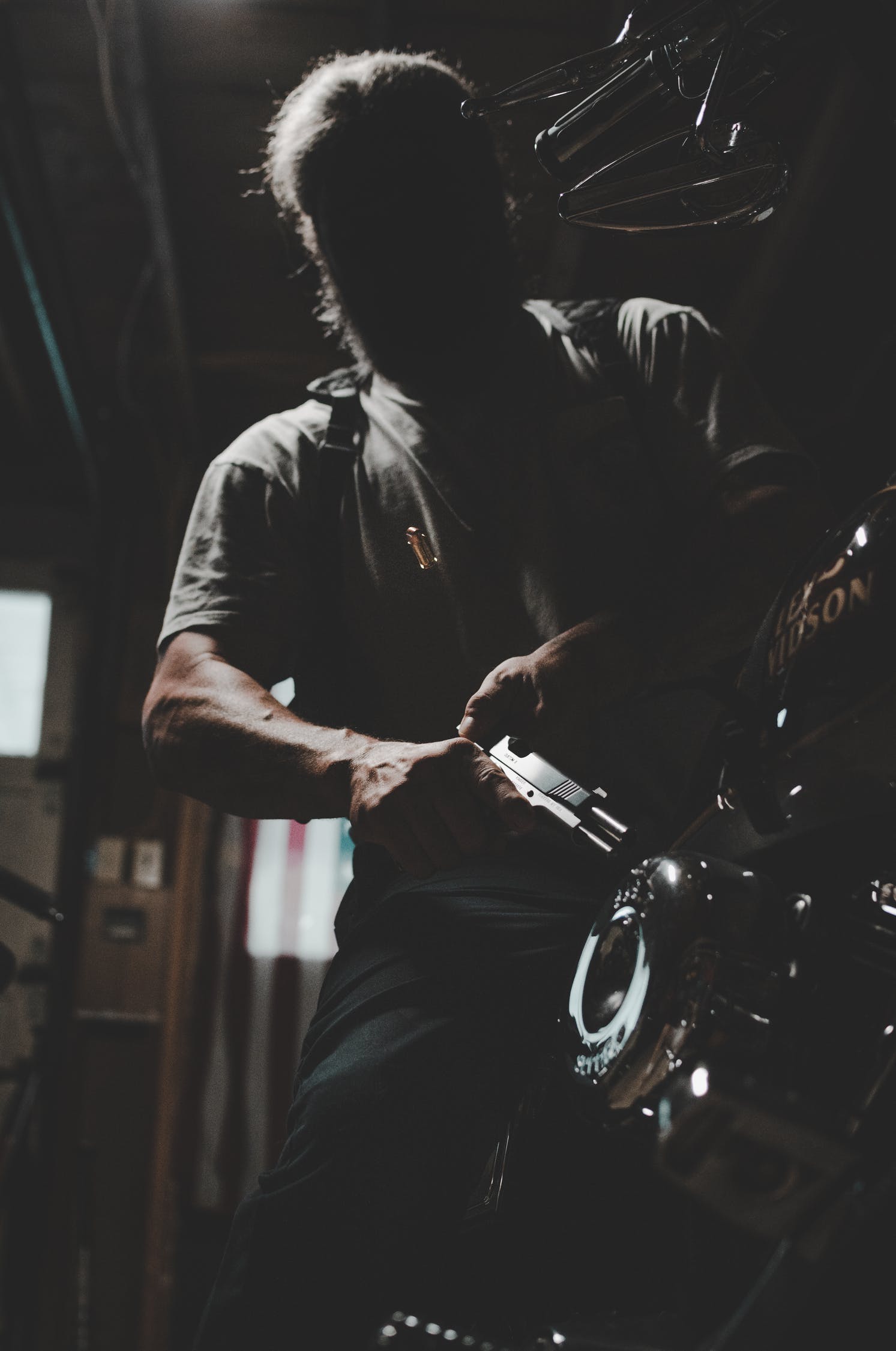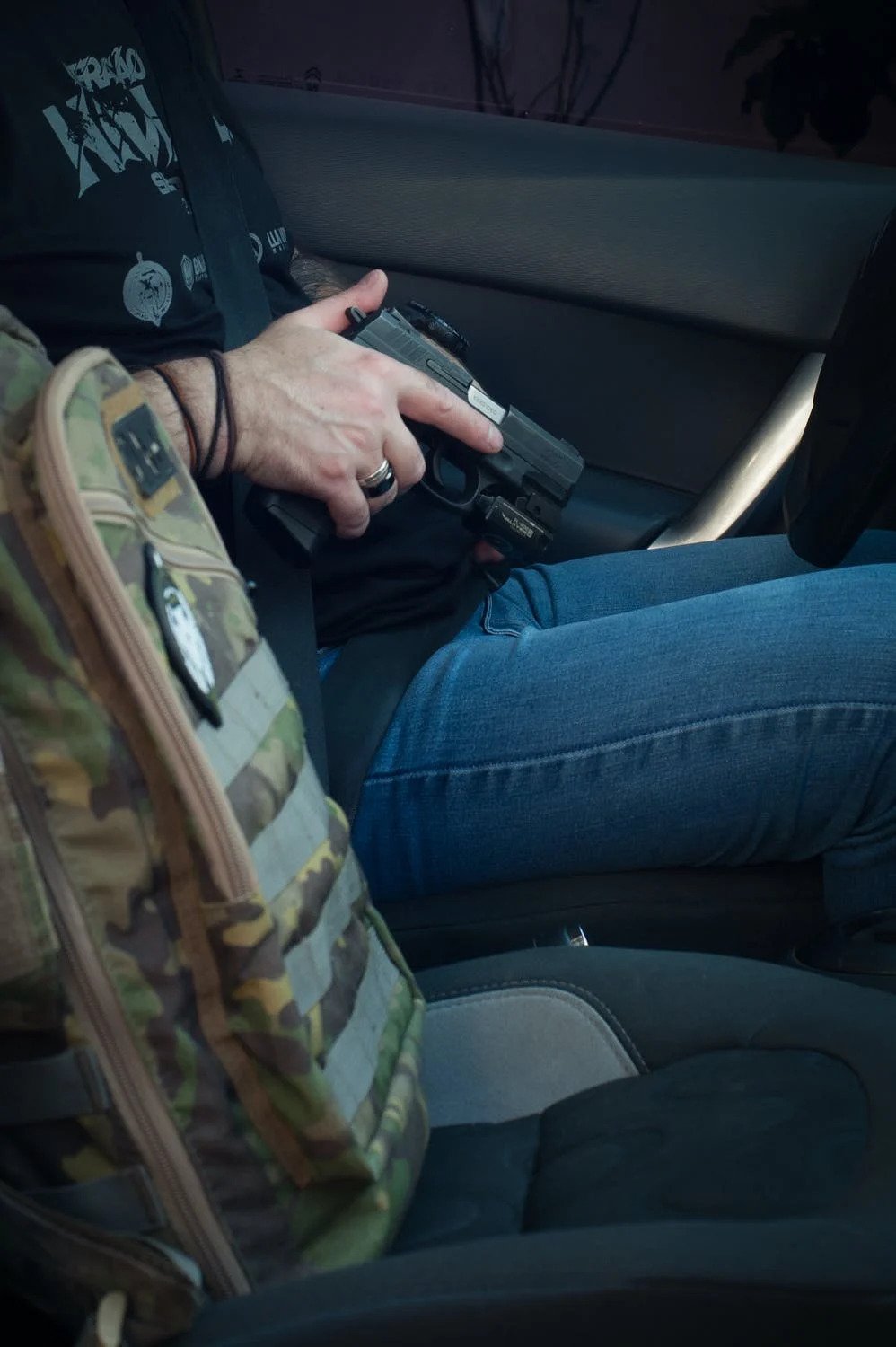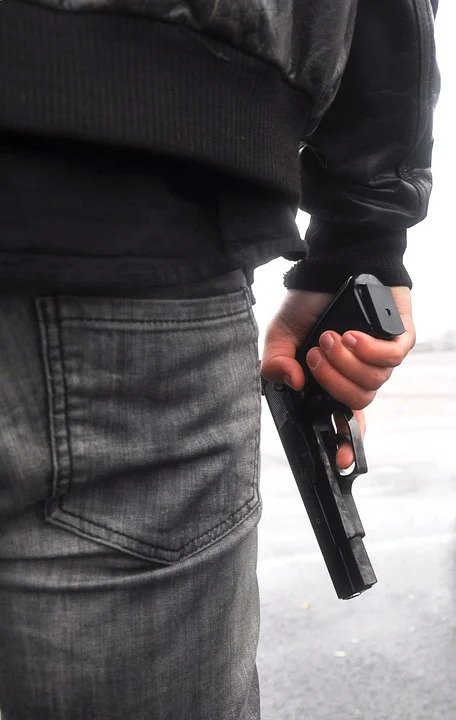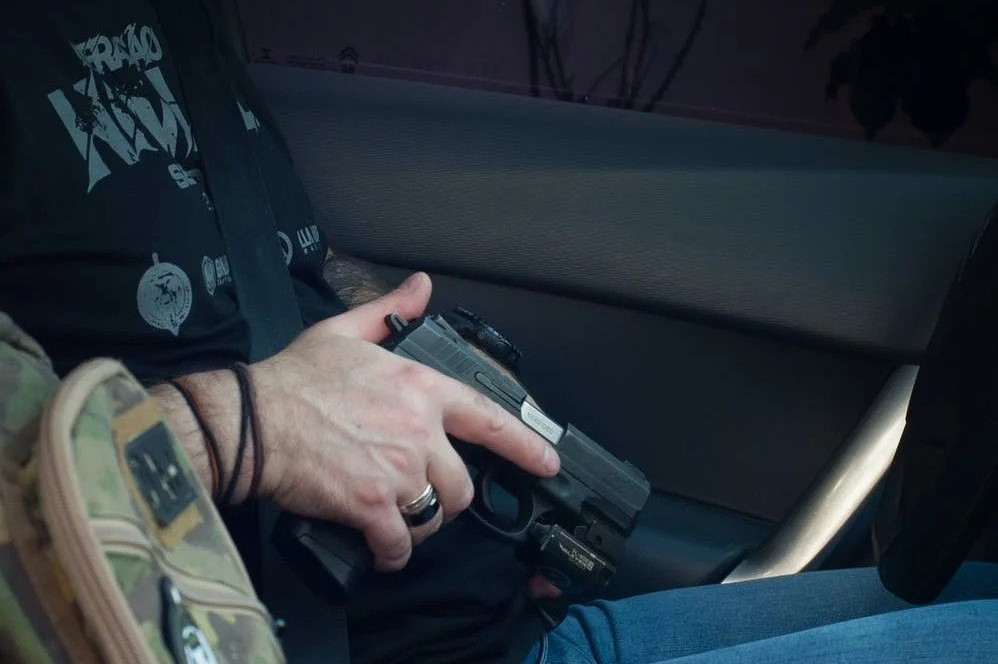Rapid Deployment and Applied awareness
In an emergency, it may become necessary to deploy your firearm, knife, or even a weapon of opportunity in physical response to an active threat intent on causing you severe bodily injury or worse. What are three close-quarter combative concepts needed for you to effectively deploy a ballistic or non-ballistic weapon in a timely manner? Applied awareness, carry, access or selection, and reaction time.
Applied Awareness
Everyone knows that situational awareness is a matter of just looking around. Keep your head on a swivel, right? Mechanically speaking, yes, you can move your head around and even put your eyeballs on select elements of your environment. However, suppose you do not engage your mind in the observation process. In that case, you may look (yes, eyeballs on something), but you cannot see – have it register internally. An example of this failure to see is looking at your watch twice to find the time because you didn’t see what time it was at first glance because you weren’t there to register. In other words, your mind was not involved, and you were simply looking.

The entire concept of applying your awareness is to ensure mental interaction with your environment. In applying your awareness, if you haven’t adopted the mindset of looking for potential threat indicators, you will never see one. Conversely, you can have every intent to look for threats, but it is a moot point if you fail to engage your mind.
The body cannot go where the mind has not been. Therefore, to respond effectively to a potential threat, you must first be mentally ready to respond. In a real-world altercation, time is never on your side. Therefore, to keep ahead of the action-reaction power curve is to stay mentally connected.
Applied awareness is making the decision ahead of time to remain alert for anomalies. Threat identification can only happen when your mind is actively engaged in the environmental observation process.
Carry, Access, Selection
Ballistic weapons (firearms) and non-ballistic weapons (edged, impact, propellants, etc.) must be carried on your person to be effective. If you leave your gun at home or in your car and you’re out on foot, you no longer have an everyday carry (EDC) weapon response option. The same applies to your EDC fixed or folding knife or propellant (OC/ pepper spray). Step one – have a lifesaving tool on your person if you intend to use it in self-defense.
Even though you may have such a tool on your person, step two is to ensure that it is readily accessible. For example, suppose it is buried too deeply under multiple layers of clothing and or holster retention. In that case, you may be challenged with an unreasonable amount of accessibility time requisite for rapid deployment, especially when under duress.
Keep in mind that you are already behind the action-reaction power curve, and time is not on your side when you are facing an active threat; you certainly don’t need additional precious seconds added to your deployment time.

Should you find yourself without a firearm or knife or pepper spray, or any other hand-held defensive implement on your person, your next best bet is to either get off the “x” (create distance between yourself and your attacker(s)) or equalize – that is get something in your hand – anything that you could use to defend yourself such as a rock, or stick or trash can lid or rolled-up magazine, umbrella, screwdriver and the like. Anything can be used as a weapon opportunity if you first look for it (selection) and then can get it into your hands quickly.
Reaction time
The last but certainly not least critical element needed for you to effectively deploy a ballistic or non-ballistic weapon in a timely manner is reaction time. Overall, two types of reaction time should be taken into consideration. One is the mental reaction processing time, and the other is the mechanical reaction processing time.
Mental reaction processing time is measured in what Bill Rogers (former FBI agent and founder of the Rogers Reactive Shooting School in Ellijay, Georgia, and designer of Safariland holsters) calls “units of human reaction time.”
According to Bill, the average amount of time it takes a human to mentally process (decide or make a determination) is approximately one-quarter of a second. For example, if you saw someone present a firearm and point it directly at you in a shopping mall, it would take you at least one UHR to acknowledge what was happening and at least one UHR to decide what to do in response (start moving, run for cover, draw your own weapon, etc.) Doing the math, it would take a minimum of two UHRs to react mentally to an active threat or .50 seconds. Keep in mind that you are already behind the curve at the onset of the incident.

In terms of rapid deployment, mechanical reaction time is the minimum amount of time it takes you to deploy. For example, go to the range using your EDC rig on a bright sunny day with birds chirping, wearing your eye and ear protection with no stressors whatsoever, and measure your deployment times from concealment using a shot timer. Suppose the fastest you can place two rounds on target from concealment in those conditions is 2.0 seconds at ten yards. In that case, you can reasonably expect not to exceed your maximum performance mechanical limit when under duress.
It can hit the fan faster than you would expect in the real world. Therefore, applying your awareness is paramount because you will find yourself too far behind the action-reaction power curve and overtaken by surprise without it.
Carry, access, and selection (if needed) are critical elements to getting something in your hand. It’s incumbent upon those training in self-defense to know where their own rapid deployment limitations are both mentally and mechanically. An honest assessment of all three affords you a realistic evaluation of your rapid deployment capabilities.

About the Author:
Steve Tarani is a former full-time CIA protective programs employee, small arms and defensive tactics subject matter expert who served on POTUS 45 pre-election executive protection detail. He is the lead instructor for NRA’s non-ballistic weapons training program offered nationally and a widely recognized SME on matters of urban survival. Tarani is also a DoD and FLETC-certified federal firearms instructor who has been on staff at Gunsite Academy (AZ) as a Rangemaster for over twenty years. Formerly sworn, he is also a former federal contractor and service provider for the US Defense Intelligence Community, US Naval Special Operations Command, and other government agencies. Additionally, Tarani serves on the National Sheriffs’ Association Committee for School Safety and Security.
Recent Posts
-
Global Ordnance Announces Exclusive Consumer Rebate: Get a Free Vortex SPARC AR with Purchase of Any Monolith Firearm
Sarasota, FL — Global Ordnance is excited to announce a powerful new consumer rebate offer launching …Aug 20th 2025 -
Global Ordnance, LLC Expands GO‑Branded Line with Magazines, Ammunition, and Accessories
Sarasota, FL – Global Ordnance, LLC, a trusted supplier in the defense and commercial firearms marke …Aug 18th 2025 -
Global Ordnance, LLC Announces Strategic Partnership with Chattanooga Shooting Supplies, Inc.
Sarasota, FL – August 1, 2025 – Global Ordnance, LLC, a premier supplier in the defense and commerc …Aug 11th 2025




